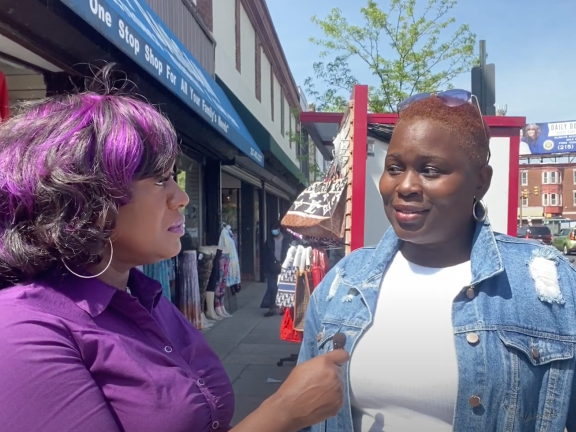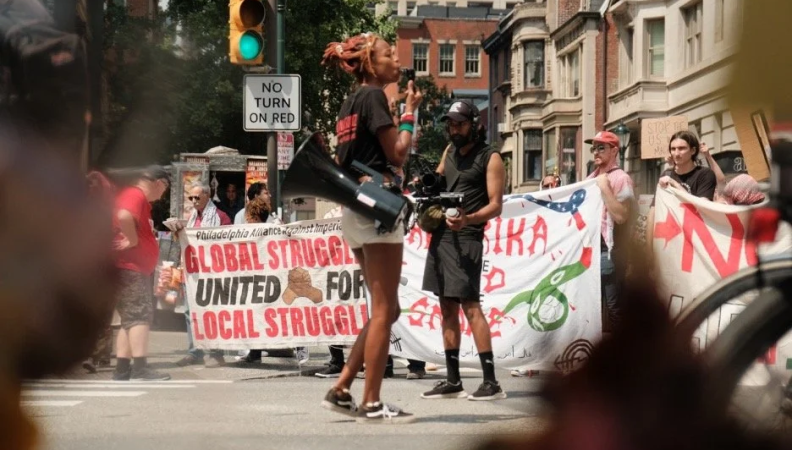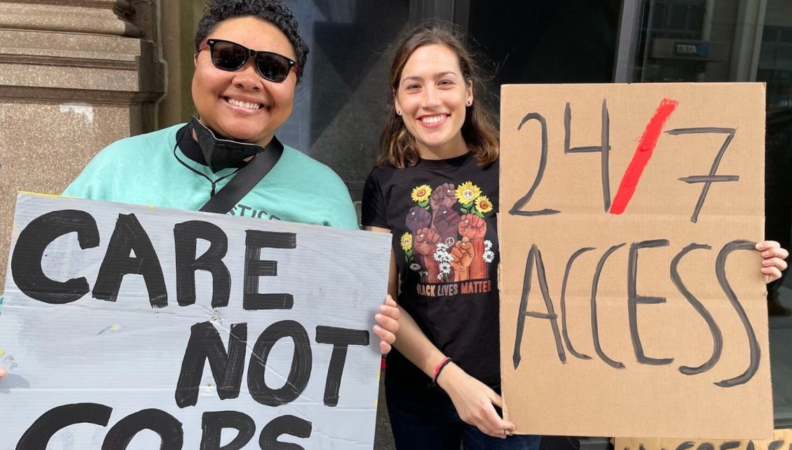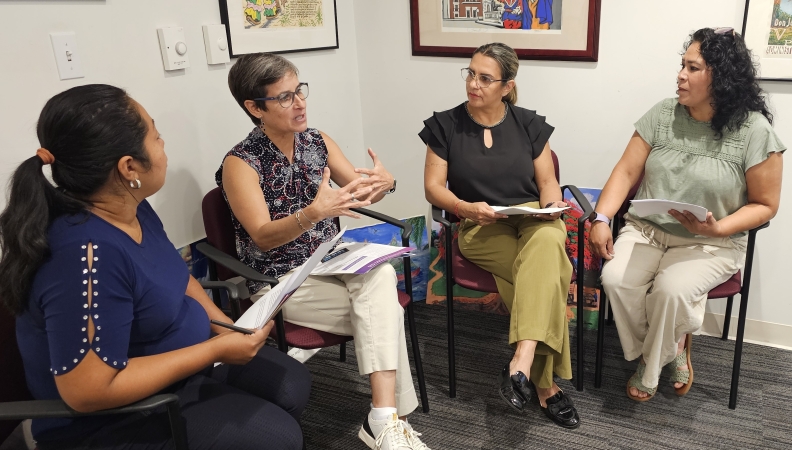How This Newsroom Builds Trust with Philly Communities

IPMF provided support to WHYY as the organization worked with freelancers and reporters from racially and ethnically diverse media outlets to produce programming for WHYY News. WHYY executed a community engagement strategy that centered news source diversity and recruitment, community news curation, trust-building, collaboration, access, and civic dialogue.
The following is a conversation with Chris Norris and Sandra Clark, WHYY’s managing editor for community and engagement and former vice president of news and civic dialogue, respectively.
Note: Since this interview was conducted in 2021, Sandra Clark is no longer at WHYY and is currently the CEO at StoryCorps.
IPMF: What prompted WHYY to initiate the cultural competency project?
Sandra Clark: For us to meet the mission of journalism, it was essential for us to look at the diversity of our staff and the relationships we had in the communities that we serve, particularly communities of color where media has not been as strong as we need to be. I wanted to look at what our barriers were to diversity, equity, and inclusion. Some of it was about how we recruit, and some was about closing the trust gap with communities. We cannot build trust or have accurate reflections of our communities if we are not committed to diversifying our staff and looking at how we report and how we frame stories.
I wanted a solid grounding in data so that we can look at our performance in various ways over time. This work is embedded in our institution, as opposed to a project we started that will come to an end. We are now [as of 2021] in year three.
How do you think about this project in the context of current debates over whether reforming legacy media institutions is enough to address systemic racism?
Chris Norris: Journalism reform isn’t a term that we use, but it’s certainly the mindset. It’s the difference between a sprint and a marathon, and I think we’re doing both. We’re mapping out and creating infrastructure that will institute changes that will be around for a while. It’s a balancing game. Also, it makes a huge difference to have support and understanding from the top.
The data shows there’s progress in some areas, like the diversity of sources and diversifying expertise. We are thinking about the context of lived experience and academic attainment. We are also thinking about how to not compete with grassroots content creators but to see them as a value add and to use them to not just enhance our coverage, but to create pipelines into neighborhoods for new stories, new sources, and original content. So, how do we build relationships over a long time, so they’re not extractive and transactional?
What are some of the ways you’ve been building those long-term relationships, particularly with Black and Brown communities?
Chris Norris: Sometimes journalists come in as “the voice of the voiceless,” but the reality is that these people have voices. That frame of how you think about community is the first step to building trust. The community doesn’t need your expertise about what’s going on. They know what’s working and what’s not working. Rather than us coming in with an agenda, we listen first. Because people exist in these neighborhoods already that provide trusted, timely news and information. So, how do we elevate them and how can we gain insight from what they do?
It’s also about having the right people in place: people who have strong ties in the neighborhoods. A perfect example is the community curators that we launched at the beginning of 2020.
Community curation isn’t a new thing but it’s a new thing in the context of journalism, particularly from a legacy media operation. It was a recognition that there are people who have stronger relationships to communities than we do. There are people who have a greater insight into what their communities want to talk about. They convene conversations for us. They recommend sources for us. They’re a huge added value to our work.
What are you learning from your work to engage directly with community members?
Sandra Clark: Engagement is one of those areas that too often lives outside of a newsroom and is not considered as critical. Likewise, diversity, equity, and inclusion have been “nice things to do,” but not really considered as a business imperative or a social justice imperative. We’re in the process of embedding our engagement work into our journalism, into our daily practices and the questions we ask each other.
So, when we look at stories, it’s not just: let’s go do this story. We ask why this is happening in this community. Who are we producing information for? Do we have the right voices? Can we hold that story until we get the right people? Have we done right by the community? We can diversify sources until we’re blue in the face and still frame a story incorrectly. So, it’s a multilayered approach.

One of the aims of the foundation is to resource organizations that build the power of Black and Brown communities to not just tell their stories, but to own their stories. How do you think about your work in relation to that aim?
Sandra Clark: I think very much about people owning their own stories. Journalism historically has been the opposite, where we [journalists] are the experts. We go in and tell you what’s important. As outsiders, journalists only get part of the story. What we’re trying to create is journalism where we don’t go in with preconceived notions about what the real story is. We hear it from people in the community.
Part of our source diversity work is looking at expertise in a different kind of way. Most neighborhoods have somebody who everybody knows is the person who knows everyone and who has seen that community change. They know whose voices are most relevant in those communities. But those are the people who never end up as the centerpiece of a story. We have to find those people who have historic knowledge about what communities already have accomplished. Oftentimes, journalists are just looking at what’s wrong because we only just discovered it that day, but there are people who have been there working to improve their communities, and we need to find and elevate them.
Chris Norris: Even before you can own your story, you have to own your experience and your expertise. A lot of times, Black and Brown people have had their expertise and their experiences diminished or told that it’s not real. They don’t see the value in sharing their story because they have been given the message that nobody wants to listen to them because they may not have letters next to their name or because they’re making it up. We must think about how we go into these communities and let them know that the things they’ve experienced are valid and relevant. It’s about being intentional about wanting to understand experiences of Black and Brown communities around police violence and reimagining public safety or voter suppression and civil rights.
It’s also about acknowledging the fullness in the way that people live their lives. People aren’t only political; we’re also social. So, we have to balance these hard topics with lighthearted things. For example, we just did Redefining Black Magic: African Americans and the Illusion Industry, which was a family friendly magic show featuring an intergenerational panel of magicians that also got into a really important discussion about the lack of diversity in the magic industry. That’s a perfect example of how to create space for Black and Brown people to own their experience, to own their story, and to connect with others who have shared values. This is where I just feel incredibly energized to be able to do this.



